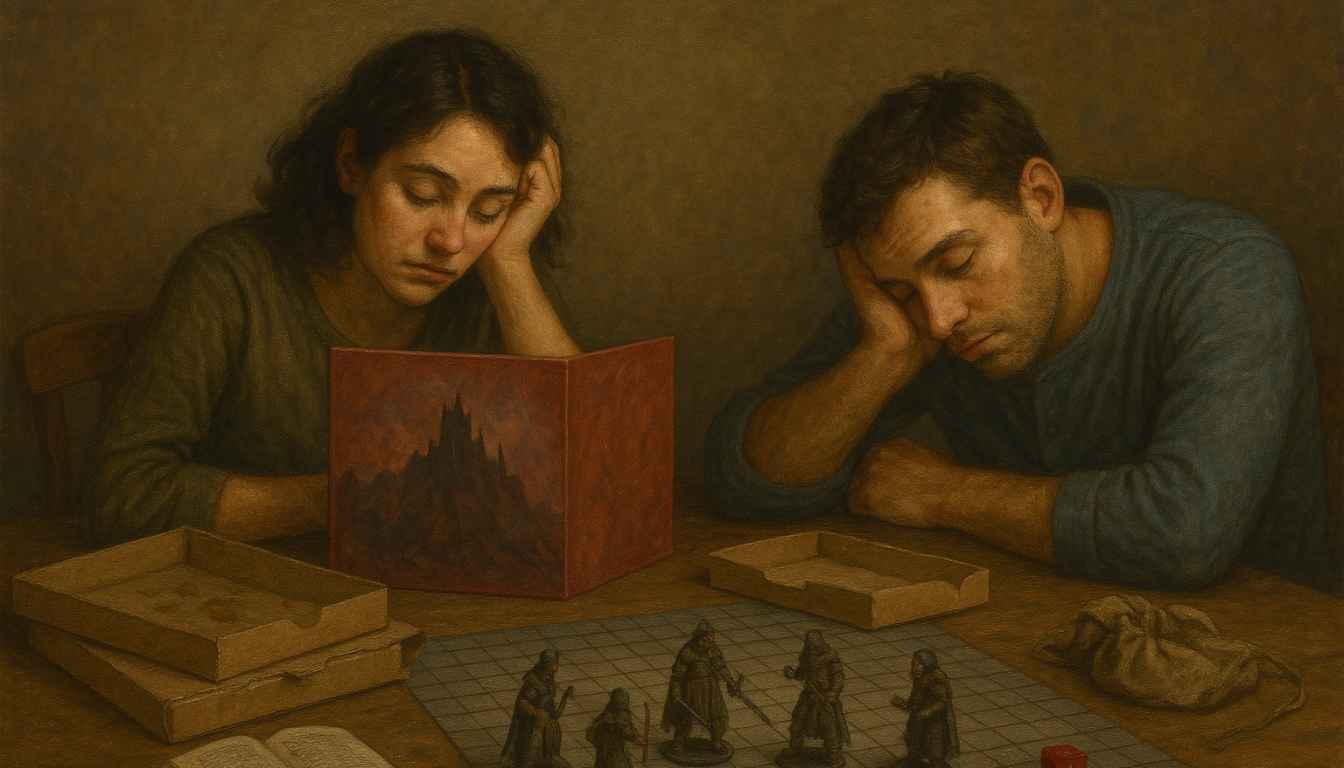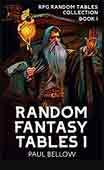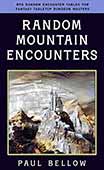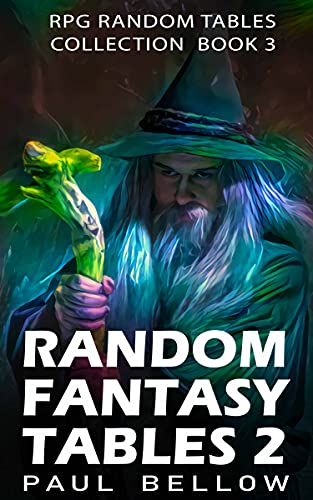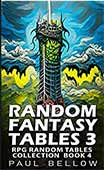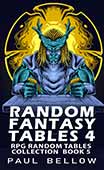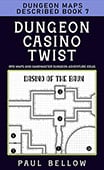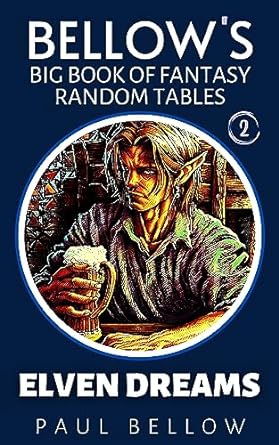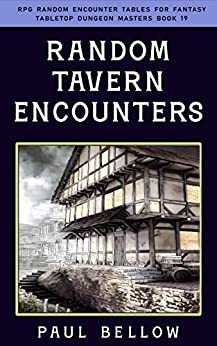Imagine this: you and your players are knee-deep in a sprawling campaign, with plots weaving through weeks or even months of gameplay. One of the greatest challenges a Game Master faces is ensuring that each session remains as vibrant and engaging as the last. At the heart of this challenge lies the art of pacing, a skill that involves timing narrative beats, maintaining momentum, and balancing intensity with quieter moments to keep player engagement alive.
Pacing is the music of storytelling; it sets the tempo, builds suspense, and provides respite, all in harmonious rhythm. Too quick a pace, and players may feel overwhelmed or fatigued. Too slow, and the campaign risks stagnating, with players losing interest. It’s like a dance, where leading the players through crescendos of action and decrescendos of introspection keeps them on the edge of their seats, eager for the next turn.
The key to mastering campaign pacing lies in understanding the varied textures of narrative flow. Imagine each session as a unique episode within the larger saga, each with its highs and lows that captivate and surprise. Classic pacing challenges like burnout or player fatigue often stem from neglecting these rhythms. Maintaining a pulse that adapts to your group’s needs is vital for sustaining energy across the long haul.
To further complicate matters, each group is unique, with its own dynamics and preferences. Some players thrive on high-octane adventures, while others relish deep roleplay and character development. Striking a balance that caters to these diverse tastes is an ongoing task, demanding attention, creativity, and flexibility from the GM.
Let’s dive deeply into the core elements that make pacing effective in tabletop RPGs. From understanding narrative beats to leveraging downtime and roleplay, we’ll explore how to manage your campaign flow to best suit your players’ engagement, providing a path to crafting unforgettable sessions.
The Core Elements of Campaign Pacing
Effective pacing in RPGs is built on essential elements that orchestrate the rhythm of your campaign. These elements include tension, conflict, downtime, roleplay, and plot revelations, each contributing to the overall cadence of the narrative. Understanding how these components interact allows GMs to weave a story that is both dynamic and immersive, keeping players engaged session after session.
Try my AI Tabletop RPG generators...and an extensive library of content!
Tension and conflict are the driving forces behind your narrative’s momentum. They provide urgency, compel characters to act, and push the plot forward. Whether it’s a building threat, a looming deadline, or interpersonal conflict, tension fuels the excitement that keeps players invested. Yet, even the most thrilling tales need breaks in intensity—this is where downtime comes in.
Downtime serves as a crucial counterbalance, offering characters a chance to catch their breath and reflect. It’s during these quieter interludes that players can explore character development, deepen relationships, and engage in meaningful roleplay. Without such moments, the relentless drive of tension and conflict can lead to player burnout.
Roleplay enriches the tapestry of your campaign by allowing characters to express individuality, forge bonds, and grow. It provides opportunities for personal stories to shine, creating emotional depth that resonates beyond a single session. These interactions are the heartbeats of your narrative, pulsing with life in every conversation and encounter.
Lastly, plot revelations act as pivot points within the campaign, shifting the story in unexpected directions. They peel back layers of mystery, providing answers that lead to more questions, and further entrench players within the world. Timed effectively, they can surprise and delight, ensuring that immersion remains unbroken.
⚔️ Fantasy RPG Random Tables Books
Make life as a Gamemaster easier…
If you play Dungeons & Dragons, Pathfinder, or other fantasy RPGs, this
RPG random tables series
is packed with encounters, NPCs, treasure, and more. Available in eBook or print—either way, you’ll have a wealth of adventure ideas at your fingertips.
Together, these elements form a seamless rhythm that drives your campaign. Predictability in pacing, however, can dull immersion, making variation the key to sustained interest. By constantly shifting between these elements, GMs can maintain a fresh and engaging campaign atmosphere.
Crafting a Campaign Schedule: A Structured Approach
In managing a long-running campaign, organization and foresight are key to maintaining momentum and player engagement. One practical method is creating a structured campaign schedule—a comprehensive timeline that outlines the narrative arcs, thematic beats, and pacing shifts across multiple sessions. This schedule acts as a roadmap, helping you anticipate major plot developments, prepare for emotional highs and lows, and ensure a balanced mix of combat, roleplay, and exploration.
With a campaign schedule, you gain a bird’s-eye view of your adventure, enabling you to make informed decisions about when to introduce new elements or give characters time to breathe. The schedule serves not only as a planning tool but also as a communication aid, giving your players a glimpse into the journey ahead without revealing key surprises. This structured approach helps align player expectations, reducing uncertainty and keeping everyone invested in the unfolding story.
Consider a schedule that spans several in-game months, outlining significant events, downtime, and transitional phases. Incorporate flexibility within this framework to allow for improvisation and player-driven changes. By maintaining this balance between structure and spontaneity, you create a dynamic campaign environment that remains both cohesive and responsive to player input.
| Session | Story Arc | Focus | Pacing Goal |
|---|---|---|---|
| 1 | Introduction | Character Meeting | Establishing connections |
| 2 | Prologue | Initial Quest | Building tension |
| 3 | Rising Action | First Conflict | Introducing stakes |
| 4 | Rising Action | Exploration | Expanding worldbuilding |
| 5 | Climax | Major Battle | High-intensity engagement |
| 6 | Resolution | Character Development | Emotional cooldown |
| 7 | Transition | Travel/Rest | Reflective downtime |
| 8 | New Arc | Plot Revelation | Reigniting curiosity |
| 9 | Rising Action | Sidequests | Diversifying interactions |
| 10 | Climax | Arc Conclusion | Delivering payoff |
This example schedule demonstrates how to structure your campaign around varied pacing goals. By alternating between intense narrative beats and opportunities for character development or exploration, you create a rhythm that keeps the story engaging while allowing moments of reflection and depth.
With a schedule in place, you provide a solid foundation for your campaign while leaving room for the unexpected. As players dive into the adventure, they benefit from a well-paced experience that feels both intentional and organic. The schedule acts as your guide, helping you nudge the campaign forward when energy lags and pull back to spotlight quieter moments that deepen emotional investment.
Balancing structure with flexibility remains the core challenge. While a schedule offers direction, it’s crucial to remain adaptable, responding to the characters’ evolving arcs and integrating player input. This ensures that the campaign not only follows your envisioned path but also grows and transforms in sync with the collective creativity and choices of the entire group. The result is a rich, immersive experience that charts a rewarding journey from the first session to the final dramatic climax.
Timing Highs and Lows in the Narrative Arc
Timing is everything in storytelling, especially in a long-running campaign where major narrative events offer structure and progression. Building toward these arcs requires careful planning to ensure each climax is both satisfying and impactful. This involves pacing dramatic events so that they neither overwhelm nor underwhelm the players, maintaining a delicate balance that no two sessions are alike.
Consider how escalating tension can lead to a thrilling climax, where players feel the stakes intensifying with every decision. Introducing mid-arc surprises can further enliven the narrative, injecting unexpected twists that keep players guessing and engaged.
Strategically placed plot reversals can dramatically alter the story’s direction, turning triumphs into challenges, or shifting alliances and motivations. These moments, if timed well, can deepen intrigue and encourage players to reassess their assumptions.
To avoid the pitfall of anticlimax, consider spacing out significant events to provide players with emotional cooldowns. After a major confrontation, allowing players to decompress and process the story promotes a natural reset of tension, fostering a renewed sense of anticipation for the next phase.
⚔️ Fantasy RPG Random Tables Books
Make life as a Gamemaster easier…
If you play Dungeons & Dragons, Pathfinder, or other fantasy RPGs, this
RPG random tables series
is packed with encounters, NPCs, treasure, and more. Available in eBook or print—either way, you’ll have a wealth of adventure ideas at your fingertips.
- Escalating Tension: Gradually increase stakes leading to a narrative apex.
- Mid-Arc Surprises: Introduce unexpected events midway to maintain intrigue.
- Plot Reversals: Flip the narrative with unforeseen turns or revelations.
- Emotional Cooldowns: Follow climaxes with periods of reflection or rest.
- Episodic Cliffhangers: End sessions with unresolved tension to build anticipation.
- Narrative Pacing Gaps: Insert lulls between key arcs for character development.
- Thematic Parallels: Reflect prior events in new contexts to deepen impact.
- Suspenseful Countdown: Implement time-sensitive challenges to increase urgency.
- Scenario Resets: Clear resolution points for new narrative branches.
- Progressive Obstacles: Layer smaller challenges that lead toward a major arc.
- Character Dilemmas: Personal conflicts that intertwine with plot threads.
- Arc Suspense Bridges: Connect story threads with suspense-filled interludes.
Intentional pacing requires keen awareness of your story’s natural rhythm and player feedback. By spacing out high points and ensuring emotional depth through calculated lulls, you maintain the momentum and intrigue that sustains player investment. Remember, flexibility is essential here. Should the pacing require adjustment, be open to changes that benefit the story and round out your campaign experience.

Knowing When to Slow Down
It’s not always about the high-octane drama and adrenaline-fueled chases; sometimes, the best move is to ease off the gas and let your players savor the moment. Slowing down the pace can be just as important, offering opportunities for rich character development, exploration, and deeper interpersonal roleplay. These sessions allow players to invest more emotionally in the world and their characters, cultivating a lasting engagement.
Downtime sessions offer players the chance to reflect on their adventures, recuperate, and engage in character-centric stories. Here, players can forge personal connections, plan strategies, and address individual goals. Such moments of tranquility provide a canvas for creativity, letting players shape elements of the campaign world and their place within it.
Character development is fostered when you take a step back from the main plot to explore personal arcs. Whether it’s resolving personal quests or delving into backstory mysteries, these slower periods deepen emotional engagement and character authenticity, building a richer narrative tapestry.
Exploration sessions open up space for players to interact with the environment in novel ways. These might involve discovering hidden histories, probing cultural nuances, or seeking out new alliances. In allowing players to chart their own course, you grant them agency—an invaluable tool in maintaining interest.
| Session Type | Goals Accomplished | Pacing Benefits | Ideal Timing Within Campaign |
|---|---|---|---|
| Downtime Activities | Character bonding, planning | Emotional investment | Post-climax or pre-major arc |
| Personal Arcs | Explore backstories | Emotional resonance | Mid-campaign, as tension builds |
| Exploration | World-building, discovery | Agency and immersion | Between intense plot events |
| Social Gatherings | Roleplay enhancement | Community and cooperation | Before entering conflict zones |
| Skill Mastery | Character growth | Achievements and development | Post-skill checks or challenges |
| Cultural Encounters | Expand worldview | Broaden narrative scope | During transitional episodes |
| Resource Management | Strategic planning | Involvement and anticipation | Before setting off on new quests |
| Ethical Dilemmas | Moral exploration | Depth and complexity | Before major decision points |
| Interpersonal Tensions | Conflict resolution | Character nuance | Following tense roleplay scenes |
| Lore Building | Insight into history | Narrative enrichment | In lead-up to major revelations |
By deliberately slowing the pace, you create contrast against more intense sequences, providing emotional depth through reflection and narrative significance. These sessions, though quieter, are vital—the heartbeats between the exhalations of action—allowing players to recharge, connect, and dig deeper into the campaign’s meaning.
Slower pacing isn’t just a pause in the action; it’s a powerful tool for grounding your story, enriching character arcs, and creating a campaign that resonates on multiple layers. Offer these reflective spaces, and you’ll find your campaign brimming with emotional resonance and vibrant character journeys.
Using Cliffhangers and Session Endings Strategically
A well-timed session ending can be a GM’s best ally in crafting a memorable campaign. Used strategically, cliffhangers can keep players on the edge of their seats, fueling anticipation for the next session. They inject suspense and ensure that players leave the table buzzing with excitement, eager for more.
Cliffhangers can range from dramatic reveals, like the unmasking of a long-elusive villain, to sudden peril, such as a collapsing bridge or onrushing army. The key to effective cliffhangers lies in their ability to create a sense of urgency and unresolved tension, igniting players’ imaginations during the intervening week.
Try my AI Tabletop RPG generators...and an extensive library of content!
Choosing quieter endings, by contrast, offers players meaningful closure and satisfaction. Ending a session with character bonding moments, or plot resolutions, allows players to relish the outcomes of their choices and build on the narrative groundwork already laid.
Identifying the right kind of ending depends on the story beat at hand. Dramatic moments demand tension-filled conclusions that propel the narrative forward, while calmer story arcs might benefit from a resonant, reflective close.
- Unexpected Intruder: A stranger bursts in with dire news.
- Mystery Reveal: A crucial clue uncovered but unexplained.
- Unresolved Battle: Combat interrupted by a greater threat.
- Timed Threat: An impending disaster with the clock ticking.
- Imminent Choice: A moral dilemma needing urgent decision.
- Vanishing Ally: A trusted NPC suddenly disappears.
- Overheard Secrets: Critical information half-heard.
- Betrayal Uncovered: A sudden revelation of treachery.
- Clue Connection: New discovery links past events.
- Environmental Hazard: Nature turns against the players.
- New Arrival: A powerful being enters the scene.
- Seemingly Explanation: A prophecy seemingly fulfilled.
- Artifact Activation: A relic reactivates with world-shaking force.
- Mysterious Arrival: An enigmatic ally or foe emerging from the shadows.
By leveraging both cliffhangers and quieter endings, GMs can craft a dynamic campaign flow that feels fresh and exhilarating each week. It’s a balance of the dramatic and the heartfelt, ensuring that players move between sessions with anticipation, satisfaction, and excitement.
Pacing is not solely about high-stakes moments; it’s about creating a rhythm that pulses with life through every crescendo and lull. Master this, and every session can be an exhilarating chapter in your campaign’s grand adventure.
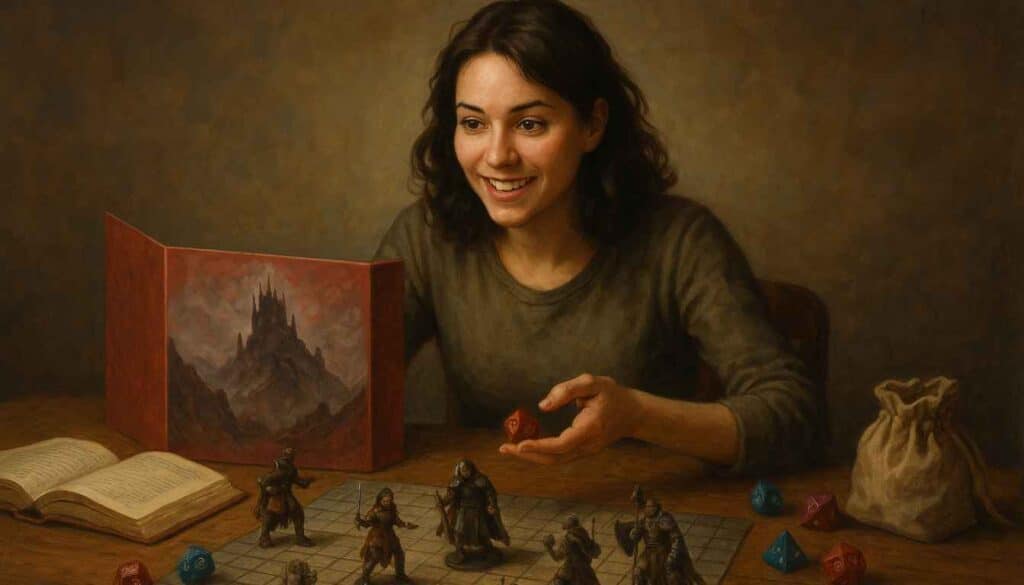
Sustaining Momentum in Long Campaigns
Maintaining momentum over the long haul of a sprawling campaign is a marathon, not a sprint. As each session builds upon the last, the challenge is to sustain energy and excitement across many weeks or months of storytelling, ensuring that the collective enthusiasm remains unflagging.
To keep momentum alive, consider rotating spotlight focus among characters. This not only balances the narrative load but also allows each player’s story arc to shine, reinforcing personal investment and connection to the campaign. Thematic arcs, in which unifying themes weave through each session, create continuity and depth that resonates on a player and character level.
Recurring villains serve as anchors within a campaign’s evolving tapestry. Their reappearances tie plot threads together, raising stakes and providing familiar faces for players to rally against. Their presence binds disparate elements of the campaign, drawing the narrative into a cohesive whole.
Narrative escalation techniques can drive long-term interest. Introduce new elements or intensify existing threats to maintain a sense of progression. Don’t shy away from raising the stakes over time, introducing new challenges and opportunities that propel the story forward.
- Rotating Spotlight: Ensure every character’s arc receives attention.
- Thematic Arcs: Unify sessions through central themes.
- Recurring Villains: Reappearances tie the narrative together.
- Progressive Threats: Escalating dangers sustaining interest.
- Character Growth: Encourage characters to evolve over time.
- Secondary Plots: Introduce side stories to deepen engagement.
- Setting Evolution: Periodically change the environment.
- Story Branching: Allow decisions to open or close narrative paths.
- Interconnected Issues: Weave webs of related conflicts.
- Legacy Challenges: Introduce problems that last multiple sessions.
- Alliances and Rivalries: Dynamics that maintain or shift tension.
- Personal Stakes: Link quests to characters’ personal goals.
- Cyclic Threats: Recur periodically with new dimensions.
- Evolving Mysteries: Uncover new layers of narrative intrigue.
- Surprise Interludes: Unexpected pauses that reveal hidden depths.
Regularly check in with your players’ feedback, using it as a compass to navigate the seas of your campaign. Adjust pacing based on group dynamics, identifying times when momentum flags and taking action to re-energize the narrative.
Your role as a GM is not just to tell a story but to foster a shared journey between your players and their characters. Master the art of sustaining momentum, and your campaign will carry its players across oceans of adventure, always eager for what lies beyond the horizon.
Customizing Pacing for Your Group
No two groups are alike, and the secret to effective pacing lies in tailoring it to the unique needs and preferences of your players. Understanding different playstyles, session lengths, and energy levels among your group is crucial for determining the right pacing “sweet spot” that ensures everyone remains engaged and excited.
Some groups thrive on the intensity of combat and action, while others prefer the subtlety of roleplay and interpersonal dynamics. Recognizing these tendencies helps you shift emphasis where needed, crafting sessions that vary in tone and delivery according to group desires.
Session lengths also play a role. With longer sessions, there is room for both intense action and slower exploration, allowing a more nuanced pacing balance. In shorter sessions, focus on concise, impactful experiences to maintain engagement without overstretching attention spans.
Trial, feedback, and observation are your allies in discovering the perfect pacing. Encourage players to share their thoughts on the campaign flow. Listen to their input and use it to refine your approach, adapting to their evolving tastes and fostering a collaborative storytelling experience.
⚔️ Fantasy RPG Random Tables Books
Make life as a Gamemaster easier…
If you play Dungeons & Dragons, Pathfinder, or other fantasy RPGs, this
RPG random tables series
is packed with encounters, NPCs, treasure, and more. Available in eBook or print—either way, you’ll have a wealth of adventure ideas at your fingertips.
Reading the Table: Adapting in Real Time
Adapting pacing in real-time is a skill that distinguishes seasoned GMs. By interpreting player signals during gameplay, you can make on-the-fly adjustments that maintain engagement and excitement without derailing the session.
Watch for signs of boredom or restlessness, such as players disengaging or fiddling with distractions. These may indicate a need to shift gears, perhaps introducing more action or shifting to a different storyline. Likewise, be attuned to enthusiasm and capitalize on it, leveraging the momentum spontaneously to drive the narrative forward.
Look for moments where players seem particularly invested or emotionally engaged. Use these opportunities to delve deeper, providing more roleplay or story detail that enhances their connection to the campaign world. Conversely, if a session feels stalled, consider transitioning to a new scene or event to reinvigorate energy levels.
- Observe Body Language: Indicators of engagement or disinterest.
- Note Conversation Flow: Vigorous discussion signals enjoyment.
- Watch for Distraction: Fidgeting or side conversations may signal boredom.
- Check for Energy Levels: Higher energy sessions invite more action.
- Monitor Response to Story Beats: Strong reactions guide focus.
- Gauge Emotional Resonance: High investment in interactions suggests success.
- Identify Repetition: Avoid getting bogged down in similar patterns.
- Track Player Cooperation: Enthusiastic teamwork suggests engagement.
- Recognize Fatigue: Plan for quieter scenes if attention wanes.
- Invite Player Feedback: Direct input helps refine future pacing.
Ultimately, fluid pacing is an art, not a science. It requires intuition, empathy, and a willingness to adapt. Improvisation becomes a central tool, allowing you to react dynamically and maintain the flow of the narrative as required. Trust in your ability to read the table, and let the story evolve naturally with your group’s needs.
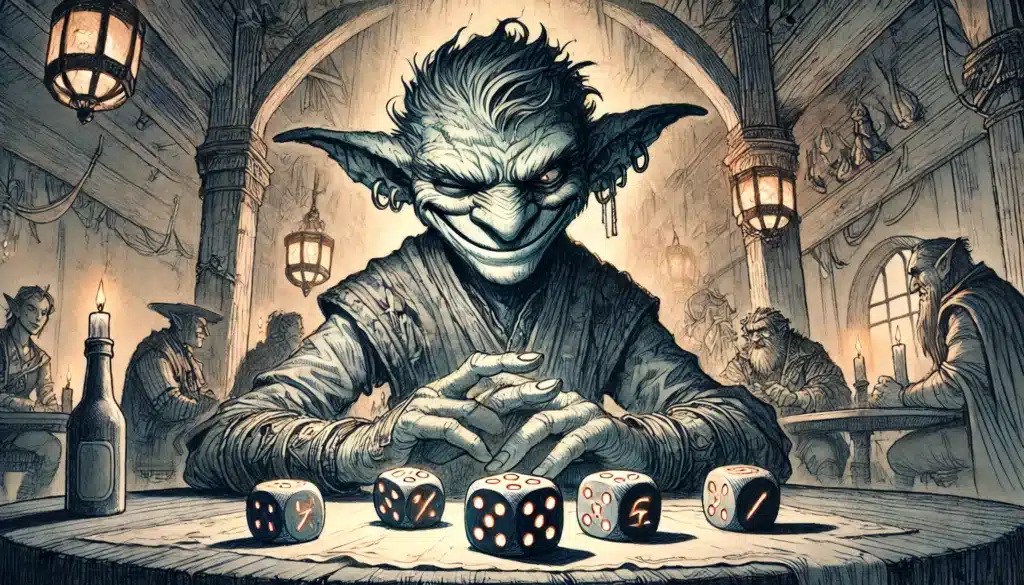
Final Thoughts on Adventure Pacing
As you embark on the journey of mastering pacing within your campaigns, remember that variety, timing, and feedback are your steadfast companions. By balancing highs and lows, interweaving tension and reflection, you create a campaign experience rich in emotional depth and narrative intrigue.
Experiment with different pacing strategies, trusting your instincts and the feedback of your players to guide you. Every group is unique, and finding the perfect pacing rhythm is an ongoing exploration that enhances the richness and engagement of your storytelling.
Ultimately, pacing is not merely about maintaining excitement but about nurturing the story’s life and vibrancy. It’s about creating a living, breathing narrative that evolves with each session, captivating players and drawing them deeper into the world you’ve crafted.
So, embrace the art of pacing, and infuse your campaigns with energy and magic that inspires week after week, month after month. Let your stories become legends that resonate long after the dice have cooled, leaving an indelible mark on the hearts of those who journey with you. Trust in your ability as a GM to lead, listen, and adapt, forging immersive tales that keep your players yearning for more adventures every time they gather at the table.

